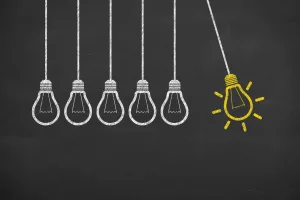10 March 2021|Latest Posts, Psychology

By Thom Dennis, CEO at Serenity in Leadership. Wearing a mask has never been more important and is saving lives globally, but in business, at home and socially we already wear a number of masks according to the multiple roles that we play in modern day life, from lawyer to mother to wife to cleaner to runner. Positive future leadership calls for much greater levels of self-awareness. Exploration and understanding of the masks we wear in different circumstances offers many helpful insights.
Thom Dennis, CEO at Serenity in Leadership, explains why we always have worn a mask at work and how Covid-19 has changed our masks and us.
Why we all wear a mask at work and always will do
- Our language demonstrates how subliminally we acknowledge this. We often use phrases such as ‘saving, or losing face’ or ‘making a face’, or ‘putting on a brave face’. You can ‘set your face against’ someone or something and we ‘face up’ to challenges, or we ‘face them down’. Some women ‘put on their face’ before leaving the house.
- We wear a mask to conform…rather than recognise and celebrate our differences particularly in a very corporate environment such as in law. The importance of diversity and equality can easily be forgotten if we are all trying to wear the same clothes, behave in the same way and wear the same mask.
- We wear masks to get ahead at work…Having to fit in to get promotion and not be judged fully on our work is frustrating at best and soul destroying at worst. In particular many successful women who have got to the top of their profession will more than likely have had to hide some of their true character, identity, femininity and circumstances.
- We wear masks to avoid rejection…Some of us switch between masks to gain approval and minimise rejection from the group or other individuals. It is when the line between who we really are and the roles we play is blurred, or we are forced to play a role we don’t want to, that problems may occur.
- We wear masks when being challenged or in times of adversity so that we feel stronger and achieve our goals. The more difficult the circumstances, the more likely we will grin and bear it rather than checking in with our feelings. Over a longer period, this requires a lot of energy and will sometimes force us to supress who we are and can have a poor effect on mental health.
- Masks make us seem one-dimensional… Sometimes we see colleagues as simply the ‘accountant’, ‘IT geek’, ‘maintenance man’, or ‘MD’. Typecasting makes us see others as merely a label, ignoring entirely the substance and dimensions of the individual.
- Looking through our own lens … Making a quick judgement about someone at work may lead to poor snap decisions about who they really are. This is particularly destructive when we are talking about people who don’t look or act like us. Rather than treat someone as you would wish to be treated, we should treat that person how they want to be treated. Challenge yourself to think deeper and remain open to getting to know them.
- Temporary masks can become permanent… The more we wear a mask, the more they can permanently shape us. On the one hand this can mean we lose our sense of real self but conversely taking on a role that requires us to push ourselves a bit out of our comfort zone can sometimes be character and career building.
- In our research we have found that people who are given a mask to wear and have been told the character of the mask, find it quite easy to act that character. The 1994 film “The Mask” is a graphic depiction in which timid bank clerk, Stanley Ipkiss played by Jim Carrey is too gentle, and is unable to handle confrontations in his life. He finds a mask which depicts Loki, the Norse god of mischief and when he puts it on, he becomes his inner cartoon self. Masks do have this effect of releasing people to act out a different, more authentic self.
How Covid has shaped our masks
We are protecting one another’s lives by wearing a face covering mask. Some of us are choosing to show our personalities through our masks, but many aren’t expressing themselves in this way and are wearing black or surgical masks. Feelings of constraint, concealment and claustrophobia are common complaints. For some, wearing masks can evoke feelings of anxiety and panic. People may feel trapped by the mask or feel more self-conscious. Whilst ultimately wearing a face mask saves lives, it is important to recognise these and other difficulties to encourage compliance with wearing masks.
- Communication problems… Only being able to see each other’s eyes builds an additional social barrier and limits personal cues and facial expressions. We rely almost entirely on sound and eye communication, requiring us to speak louder. This affects tonality in the workplace with loud speech sometimes being received as unintentionally aggressive or rude. This is all in addition to the fact that we can’t touch people or get too close to them.
- So what happens when we meet someone now? What unconscious decisions are we making as we try to make sense of what we are seeing. Our brains are constantly trying to understand by relating the information we receive in the moment with previous experiences. It’s difficult to relate to someone when there nothing to relate them to.
- Working from home means blurred lines… The majority of business workers used to wake up and go into work every morning. Now some of us work in a back room, kitchen or home study. Switching into our work role at home can be tricky because we are likely to need to multitask more, such as help with the children, and we’ve lost the gap in which we used to switch between our roles – now we simply walk from one room to another. Blurred lines often increase stress levels.
- Working from home has left those whose mask has provided some protection at work such as a uniform like a suit or a doctor’s white coat, feeling vulnerable. Wearing pyjama bottoms whilst attending a Zoom meeting can change a mindset significantly.
- Agility…One exciting development is a lot of businesses have risen to the challenges, shifted quickly, made the best out of the situation and focused well on their priorities. This includes seeing what their people’s strengths (and weaknesses) are and being more understanding of their personal circumstances and life roles.
Author:

- lisafoundersitehttps://thesuccessfulfounder.com/author/lisafoundersite/
- lisafoundersitehttps://thesuccessfulfounder.com/author/lisafoundersite/
- lisafoundersitehttps://thesuccessfulfounder.com/author/lisafoundersite/
- lisafoundersitehttps://thesuccessfulfounder.com/author/lisafoundersite/






